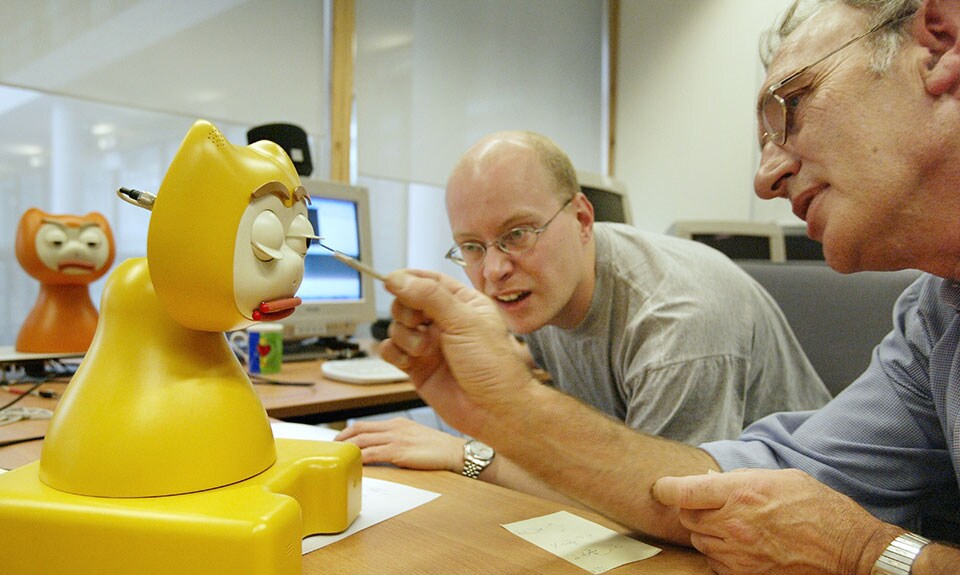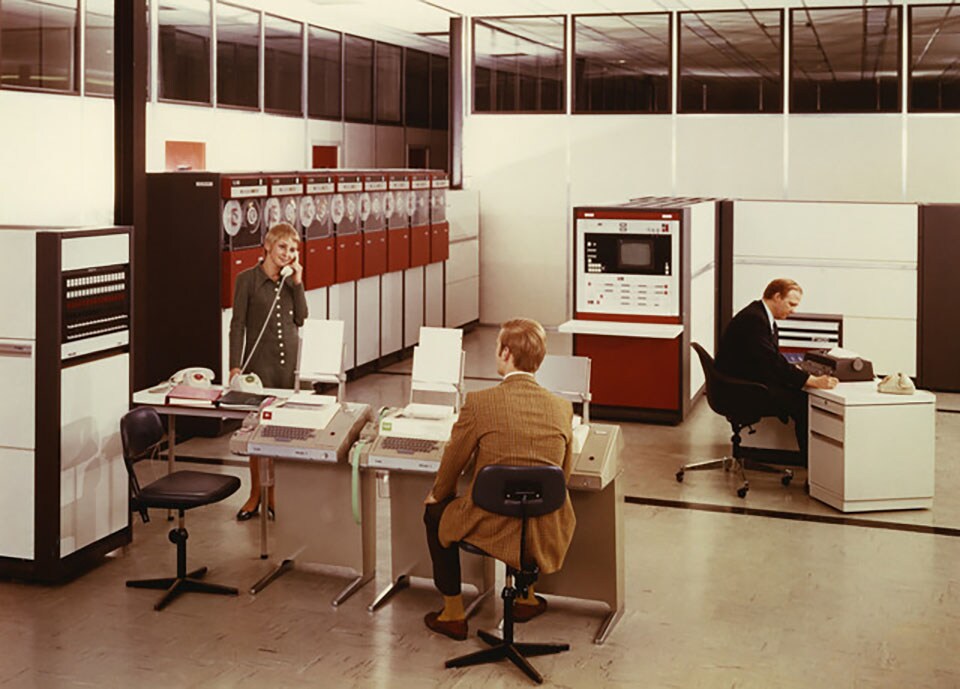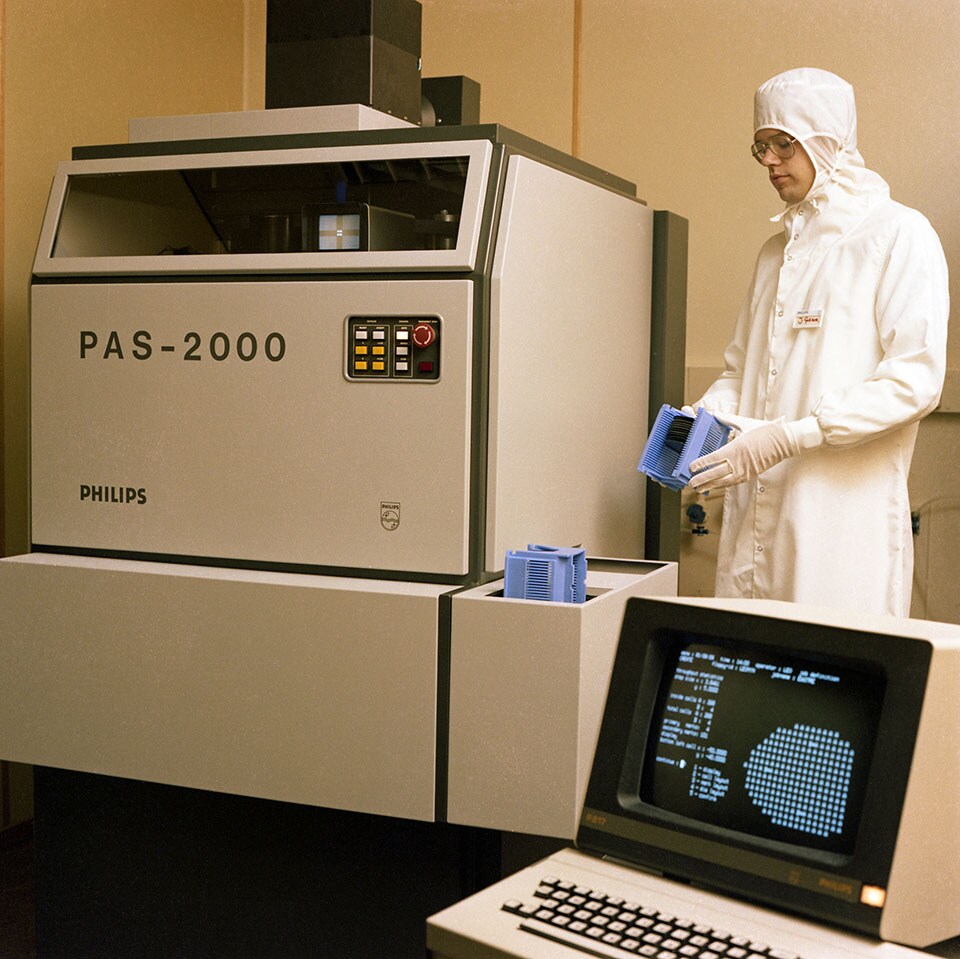'If Philips have their way, the remote control will quickly become a thing of the past. Soon, everyone will have their own electronic assistant. The robot cat has a wide range of capabilities. He can, for example, select music and movies, make appointments, and read the weather forecast.' This is from a national newspaper in July 2005. Almost two decades ago, the iCat, a precursor to the modern digital assistant, demonstrated what would become possible in the future. For although the robot cat did not make its big breakthrough at the time, the concept of the smart assistant has now become fully established.
The advance of AI is unstoppable. The current hype could almost make you forget that AI has been around for a while and experienced a long history of technological breakthroughs. Intelligence as we now know, enables underlying technological advances in computing power, storage capacity, language models, and advanced speech technologies.

The foundation of computing and AI technology
In many of these innovations, Philips plays a pioneering role. Over the years, Philips has helped to build the foundation of computing and AI technology. But what becomes possible when these separate components for computing are put together?
This becomes clear with the introduction of Victor at the 1956 Firato exhibition, the first Dutch technology fair. Victor is an intelligent electronic robot from Philips that plays tic-tac-toe at a speed that was unprecedented at the time. A countermove only takes 0.02 seconds! The audience is introduced to a “thinking” computer for one of the first times.
Knowledge of light bulbs
In the following years, Philips continues to innovate in computer technology. Philips' first non-commercial computer is called PETER: Philips Experimental Binary Electronic Calculator. It is already in use at NatLab in 1956. PETER consists of electron tubes (pentodes), a drum memory, and a toroidal memory. The quality of Philips' pentodes is unparalleled at this time.
The engineers use their knowledge from developing the light bulb to make pentodes. In fact, these electron tubes are a system consisting of glass, vacuum, and metal electrodes, which are precisely the components of the light bulb that made Philips successful in the early part of the last century.
Fastest calculator in the world
The PETER is not very robust and so the engineers went back to the drawing table. In 1962, the world-famous scientific Philips Technical Journal publishes an article titled "Calculating sounds of the PASCAL”. This abbreviation stands for Philips Acutely Fast CALculator, a computer built by the engineers of the Physics Laboratory between 1957 and 1960. At the time, it was the fastest calculator in the world.
The PASCAL, known for its "calculation sounds," has been called the first producer of electronic music. When performing calculations, PASCAL makes various sounds. Writing a program so that certain notes are played one after the other, creates a melody. It’s an early form of computer art!
Making a name for itself in hardware
Another innovation in automated computation is the STEVIN, which stands for Fast Count and Multiply Instrument (Snelle TEl en Vermenigvuldig Instrument). While PASCAL is used for scientific computing, STEVIN focuses on administrative tasks. It signifies Philips’ long involvement in the application of computers. The establishment of Philips' Computer Industrie in 1963 marks a new phase. The company starts developing a range of mainframes and computers, such as bank terminals, office computers, word processors, and game consoles.
At the time, the powerful mainframes still fill a room, but that changes with the introduction of microscopic integrated circuits on a sheet of silicon. These small pieces of silicon are called chips. The development of the chip reduces man-sized cabinets containing dozens of pounds of electronics to tabletop size. Miniaturization down to micro level appears.

Small and powerful
Further miniaturization could not have taken place without the invention of "LOCOS”. In 1966, Philips' Physics Laboratory comes up with the groundbreaking LOCOS technology. This stands for LOCal Oxidation of Silicon. This semiconductor technology makes it possible to manufacture very much smaller and more powerful chips. This technology has been used in the manufacture of chips ever since and is essential for the further development of computers. These developments provide more computing power and thus faster data processing.
Over the years, Philips has played a major role in developing chip technology, both for its own company and for subsidiaries. For example, NXP emerged from the Semiconductors division of Philips and rolled out the first wafer-stepper from the factory at Philips; after that, a joint venture between Philips and ASM International further developed this technology. It is now known as ASML, the world leader in this market. TSMC, currently the world's largest independent semiconductor manufacturer, was also created with Philips' help in 1987.

From hardware to software
In the 1980s developments in data storage and processing also make a major leap forward, with the introduction of the compact disc by Philips and Sony in 1982/1983. In addition to its revolutionary contribution to sound enhancement with digital audio techniques, the technology behind the CD contributes to many innovations in digitization. The CD lays the foundation for other digital optical systems, such as CD-ROM, CD-I, CD-RW, DVD, and the Blu-ray disc, and serves as a storage medium and software carrier.
And although many people know the compact disc as a music carrier, it has had a standard role in computing for exchanging files and installing programs for many years. In fact, the number of bits loaded onto computers from a CD-ROM may be greater than the amount of music played from an audio CD.
From music to health
These technologies play a crucial role in increasing data storage capacities and ways to make that data accessible. They are not only used for storing (music) files; Philips also introduces CD and DVD technology into healthcare. In 1995, the Philips “CD-Medical” paves the way for the CD-ROM in hospitals’ cardio departments, replacing the relatively expensive 8mm cardiac film. More than 10 years later, optical DVD technology from the same year is also used in Philips Intellisite digital pathology systems.
A DVD player also acts as a very accurate microscope that reads digital data quickly and very well. Using digital techniques, slides containing tissue can be scanned and then viewed or stored on a monitor. The microscope is thus replaced by DVD optics. The system helps doctors to make faster and better diagnoses and allows remote consultation.
Communicating with the computer
Computer technology becomes better and better, but Philips also thinks about how people can interact with computers. The interaction between humans and equipment has had Philips’ attention for some time. To allow people to communicate with computers in an understandable language, Philips facilitates the PHLIQA (PHiLIps Question Answering) project, a chatbot avant la lettre, in the 1970s. Today, natural language processing by computers is an important part of AI.
At the beginning of this century, Philips develops a cat-like robot, the iCat, that can convey all kinds of emotions through its facial expressions. In doing so, Philips creates an experimental platform for research into human-computer communication. The iCat is already called the electronic assistant or “smart companion”.
Surrounded by intelligence
Making devices and communicating with them is only part of the puzzle. How can devices be seamlessly introduced into daily life? In 1996, Philips presents the “Vision of the future”; a world of tomorrow, in which information technology is fully integrated in everyday life. Smart homes, working from home, interactive education, personalized healthcare: Philips’ vision predicts it all.
Philips is taking the next step in this vision by introducing the concept of Ambient Intelligence, a type of intelligence embedded in our surroundings. The future vision of Ambient Intelligence is that technology will continuously run in the background and respond to people’s needs and preferences without receiving explicit instructions.
Improving lives with technology
These developments are inseparable from Philips' long-term vision of making people's lives better with technology and meaningful innovations. Today, the use of AI is making this vision more and more real. Without the developments in computing power, storage capacity, and human-computer interaction that we described earlier artificial intelligence as we know it today would not have been possible.
Would you like to learn more about the many historical, current, and future developments in the field of AI? Come and visit the brAInpower exhibition at the Philips Museum.
Text written by Miriam Lengová, Philips Company Archives.
Copyright: Koninklijke Philips N.V. / Philips Company Archives.

